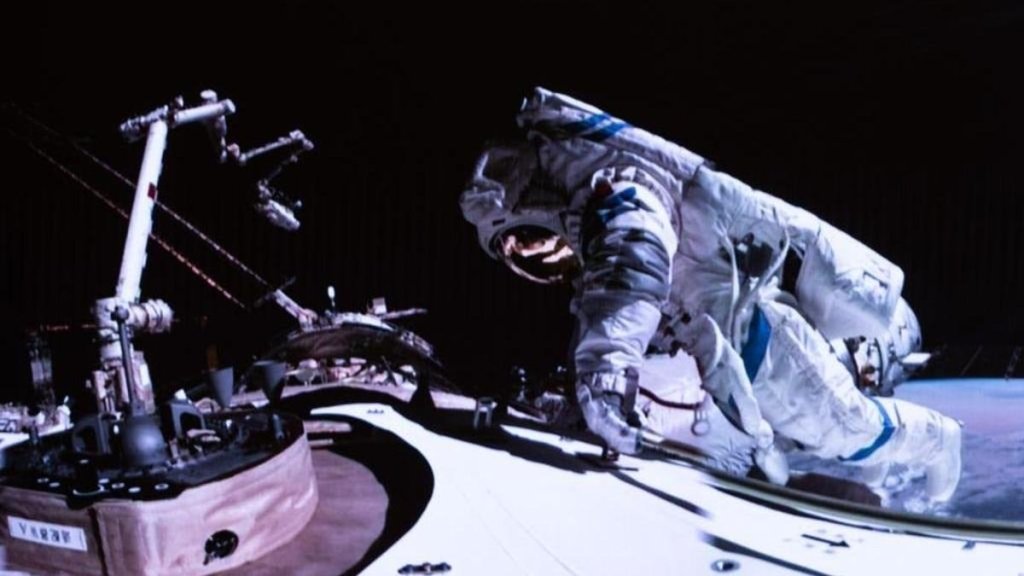
China’s space station crew carried out two spacewalks this past winter to repair the solar wings attached to the core module, which had been damaged by space debris.
The Tiangong space station’s core module, Tianhe, suffered a partial loss of power due to the impact, leading China to dispatch its astronauts on a pair of spacewalks for orbital repairs. The recent spacewalks were historic, marking the first time China’s astronauts had to conduct repair work in orbit. As the state-run media outlet Xinhua now reports, these repairs were successful, fixing the core module’s solar wings.
The Shenzhou 17 crew members—astronauts Tang Hongbo, Tang Shengjie, and Jiang Xinlin—spent nearly 16 hours tethered to the space station during the two spacewalks, the first on December 1, 2023, and the second on March 1, 2024, according to the China Manned Space Agency (CMSA). The space station’s solar arrays are now fully functional, according to Xinhua, noting that the damage resulted from the “impact of space debris on the solar wing’s power cables.”
It’s not clear when the impact to the space station took place, or what exactly might have struck the solar arrays. Given that the first spacewalk occurred in December, it’s likely the impact occurred shortly before then. It may have been a natural occurrence of a micrometeorite in orbit, or the result of human-spawned space junk.
China’s Tiangong space station has executed several maneuvers to avoid space debris, Lin Xiqiang, deputy director of CMSA, said during a recent press conference, as Xinhua reports. The latest incident has prompted the Chinese space agency to adopt preventative measures to mitigate the risks of space debris. An upcoming mission to the station will bring along “space debris protection reinforcements for extravehicular piping, cables and critical equipment during their extravehicular activities,” according to Xinhua.
According to Lin, the space agency has improved its ability to predict the orbits of the space station and surrounding objects, refined the procedures for space collision warnings and avoidance maneuvers, and cut the false alarm rate by 30 percent, Xinhua reported. CMSA will also use the high-definition camera on the space station’s robotic arm, and the extravehicular hand-held cameras used by the astronauts, to inspect Tiangong from the outside and analyze the likelihood of small debris impacts.
The risks posed by space debris in orbit are growing as more spacecraft are launched, increasing the likelihood of orbital collision. Earlier this year, a defunct Russian satellite came within 10 meters of NASA’s TIMED spacecraft, which would have resulted in thousands more of space debris fragments floating in orbit.
For more spaceflight in your life, follow us on X and bookmark Gizmodo’s dedicated Spaceflight page.

